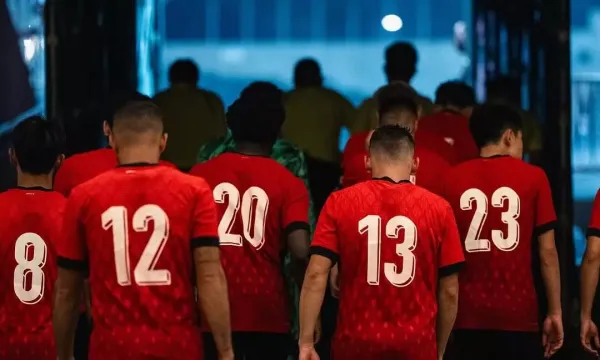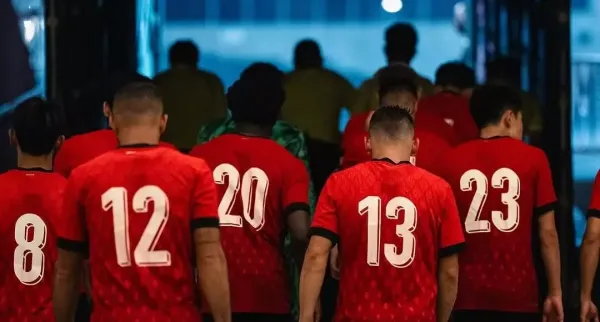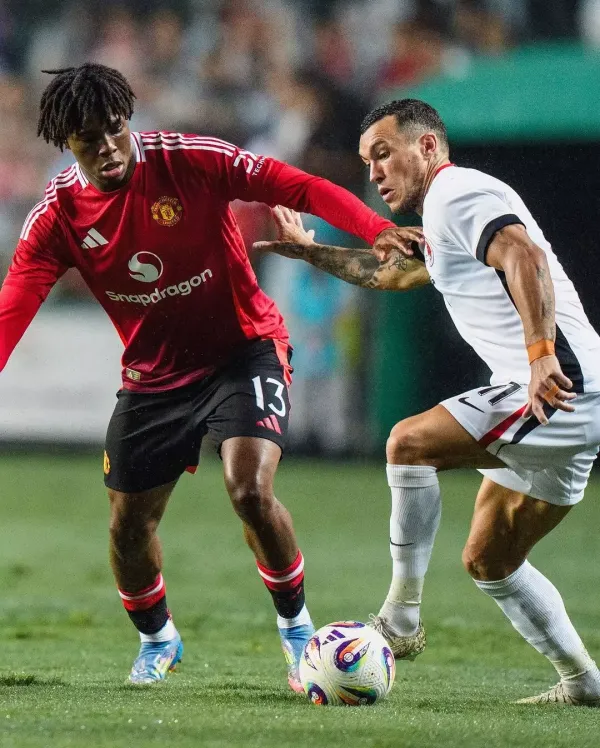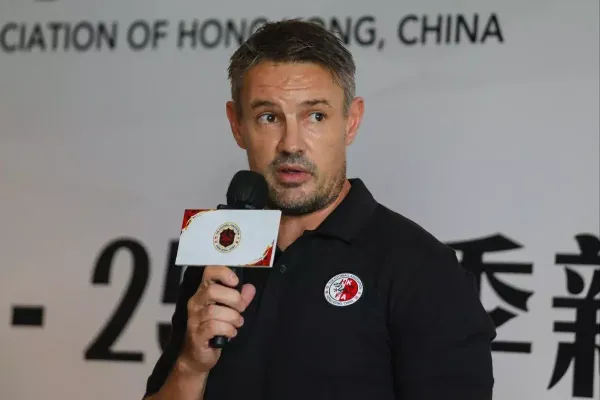


The 2023 Asian Cup is still fresh in the minds of Indian football fans, but for all the wrong reasons.
Three games, three losses, none scored, six conceded. India finished as the worst team in the tournament. Hong Kong was just above them on the table.
They narrowly edged India by scoring a solitary goal – India couldn’t manage even that. While their paths didn’t cross directly, their fates mirrored one another.
Now, they meet again, not on the main stage but the AFC Asian Cup Qualifiers.
A look back at the past
Both nations have deep roots in Asian football. The Hong Kong FA was formed in 1914, decades before India’s AIFF (1937). Together, they were among the founding members of the AFC in 1954.
Hong Kong even hosted the first-ever Asian Cup in 1956, finishing third. India’s best came in 1964 as runners-up, a run that included a win over the hosts, with legends like Inder Singh and Chuni Goswami on the scoresheet.
Talking about Hong Kong football also means confronting its political backdrop. Since the 1997 handover from Britain to China, Hong Kong has operated under the “One Country, Two Systems” model, meant to preserve autonomy and freedoms.
But many believe Beijing’s grip has steadily tightened, affecting daily life, law, and even sports.
One example came in 2023, when the Chinese Olympic Committee mandated that all Hong Kong sports bodies receiving Chinese funding adopt “Hong Kong, China” in their names and logos.
For football, that meant rebranding the Hong Kong Football Association to the Football Association of Hong Kong, China first appearing under that name at the 2023 Asian Cup in Qatar.
Interestingly, the Football Association of Hong Kong, China shares some uncomfortable parallels with India, governance issues, financial mismanagement, scandals involving harassment and match-fixing, and a general resistance to oversight.
India will face a familiar figure on the touchline with Ashley Westwood, who has coached various clubs in the country, at the helm for Hong Kong.
“It will be a big test, but I know everything there is to know about India, with my experience managing (clubs) in the country, then playing against them for Afghanistan,” he told the South China Morning Post ahead of the game.
Both teams are level on one point each, having drawn 0-0 in their respective games against Bangladesh and Singapore. Hong Kong is currently unbeaten in their last nine internationals with seven wins and two draws.
Westwood’s first game in charge, a 0-1 defeat to Liechtenstein, had fans already questioning his appointment. But Hong Kong bounced back with seven straight wins – their longest winning streak since 1985. That streak ended with the recent draw against Singapore.
Since Westwood took over, Hong Kong has won seven, drawn two, and lost just one of their last 10 matches. They’ve scored 20 goals and conceded just three, keeping six clean sheets. Notably, five of their goals came from set-pieces.
Players to watch out for
1. Everton Camargo
Everton Camargo is arguably Hong Kong’s most lethal forward. Born in Brazil, he gained Hong Kong citizenship in 2023. Playing for Lee Man in the HKPL, he leads the league in goal contributions this season.
Camargo is HKPL’s third all-time top scorer, with a Players’ Player of the Year award and a Golden Boot to his name. For the national team, he has thrived under Westwood, scoring five and assisting six in eight matches.

However, his surprise omission from the squad that faced Nepal on 5 June raised eyebrows, especially after a strong showing against Manchester United just days earlier. Reportedly having picked up an injury, it remains to be seen if he makes the final list for the India clash.
2. Juninho
Another naturalised Brazilian, Juninho, joined the Hong Kong national team in 2023 and featured in their Asian Cup campaign, though injuries limited his involvement.
Since Ashley Westwood’s arrival, Juninho’s role has been rejuvenated. Now operating behind the striker in a second striker or attacking midfield role, the veteran brings composure and intelligence to the final third, scoring once and assisting four times.
3. Yupp hung office
The captain of the side, record-appearance maker, and the guardian in the net. Yupp Hung Fai is the leader both figuratively and literally for this Hong Kong side.
A veteran goalkeeper with the most clean sheets in HKPL history, he remains a reliable presence between the posts. Under Ashley Westwood, he has recorded 6 clean sheets in 9 appearances, conceding only three goals.
3. Leon Jones
Another constant of the Westwood reign, Leon James, is an academy product of Hearts in Scotland. He later moved to the US and played competitive university football in the US before returning briefly to Scotland. He then joined Hong Kong’s Rangers before moving to Kitchee FC.
Naturalized in 2023, he’s played nearly every match for Hong Kong when fit. A solid addition in the backline, he is a tough centre-back who adds real presence and vigor to the Hong Kong defense.
Other notable names in contention include Oleksi Shiakotin, a recently naturalized Ukrainian goalkeeper who could make the final squad. Matt Orr, a key striker under Westwood, remains a doubt due to a muscle tear, though he was named in the preliminary list.
Meanwhile, 21-year-old Michael Udebuluzor appears to have picked up a hamstring injury in the friendly against Nepal. With both of Westwood’s preferred striker options uncertain, it remains to be seen how the lineup shapes up.
Tactical Identity
Under Ashley Westwood, Hong Kong is more proactive and possession-driven than under his predecessor.
Like his Afghanistan side, Westwood’s team can adapt, showing attacking intent and defensive grit.

In possession, Hong Kong typically operates in a 3-2-4-1 setup. Full-backs push high and wide, while the striker looks to exploit space behind. On the right, Camargo is the go-to outlet – direct and dangerous in 1v1s.
Camargo also excels in transitions – fast, strong, and often making the right decisions on the break. In midfield, Fernando serves as a key orchestrator during build-up play.
Out of possession, they defend in a mid-block, usually in a 4-4-2 or 4-4-1-1, staying compact and narrow. While passive in structure, they can shift into an aggressive press when required.
However, their transition from attack to defence occasionally leaves exploitable gaps, something India might target.
Set-pieces are a clear strength. Hong Kong often looks for quick throws or deliveries behind the defensive line, catching teams off guard. Their aerial threat and rehearsed routines have been a standout under Westwood.
Conclusion
Both teams are under pressure. India’s camp has been hit by off-field turmoil, including reports of coach Manolo Marquez’s early departure. Hong Kong, meanwhile, faces a growing disconnect between fans and the manager.
After the 0-0 draw against Nepal on June 5, chants of “Westwood out” echoed from the stands. The Englishman didn’t mince words in response:
“I think their opinion is wrong and invalid. If you call yourself a supporter, get behind the team and manager,” he said.
Despite strong results, Westwood’s record comes with an asterisk with most wins coming against lower-ranked teams.
On paper, India may seem the favorite based on rankings and past meetings. But on the pitch, this will be anything but predictable. With only the group winner advancing to the Asian Cup, it’s truly do or die for both sides.
-
Was Sonam Raghuvanshi’s sudden request to visit Kamakhya Temple a setup? How live location to lover helped killers track Raja

-
Price wars grip China as deflation deepens, $30 for a luxury Coach bag?

-
Auckland rush hour turns into traffic nightmare as severe thunderstorms, flash flooding and 27km gridlock paralyze the city

-
Delhi: Massive fire erupts in Dwarka Sector 13 flat, 8 fire tenders rushed to spot

-
Poilievre pushes for national projects: Another bold vision or a desperate bid to stay relevant?
